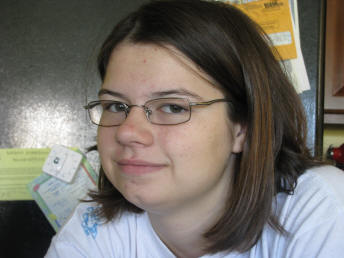Honor the Past
Kat Dart

(9/2011) A few days ago, I was in Pennsylvania, in the back seat of the Nissan, listening to my iPod, breaking up sisterly spats, looking for signs directing traffic to Knobels, a family amusement park.
At the first sign I saw, pointing out "Knobels - 7 Miles", my mom and dad appeared to have a quick conversation, and he promptly turned the car around, and went back the way we came.
I decided this was a rather interesting turn of events, and pulled out my ear buds to ask what we had managed to forget back at the hotel.
As it turn out, we actually hadn’t forgotten anything, but rather, my mother had seen something interesting.
"Centralia - 14 Miles."
I admit, I was completely uninterested (amusement park vs. some random town in Pennsylvania? Please. Why on earth were we wasting time for this?) until Mom spouted off some facts about Centralia.
50 years ago, Centralia was an active coal-mining town, with a population of over 2,000 people.
49 years ago, everything went south for Centralia.
A regular town procedure - burning the trash in the landfill - destroyed Centralia. Firefighters went to the dump, lit it on fire, and let it burn for a time, as was protocol.
The fire then wasn’t extinguished properly. A coal vein caught on fire.
The topside fire was put out, but the underground fire continued to burn, even after several unsuccessful extinguishing efforts. The fire eventually burned its way to an abandoned coal mine.
The fire has since spread underground to cover over 400 square acres, and has enough fuel to burn for another 250 years. Today, there are signs, warnings all over Centralia, warning for low oxygen levels, poisonous gas, possible sinkholes, temperature that can reach over 1,000 degrees.
Today, there are few actual indications of the fire, and all of them are strange and more than a little disturbing.
The fire vents, small holes only a few inches deep, placed in the sides of hills, are so hot that the surrounding rock has been burned black, and the smoke that issues from them warms the air noticeably. If one were willing to stick their head near a vent, one would hear the hissing of flames beneath the surface of the earth.
There are also the remnants of route 61, the highway route that used to lead into Centralia. The highway itself has long, thin cracks running through the surface, leading up to a giant crevice, just barely narrow enough to jump across. The temperature is also higher here, and smoke pools out of the crack. A small distance away, the road itself has
expanded and bubbled up to form a large cement hill, full of spider web cracks and small fissures that eject smoke.
That’s only one piece of Centralia’s past. The creepier piece is the eerily empty maze of streets that make up what used to be Centralia. Slabs of sidewalk, steps leading up to a once-existing house, curbs still exist. Pieces of fences, house foundations, possible business foundations, even the occasional chunk of furniture exists. Holes in the ground
for poles, mailboxes, railways still remain.
Driveways lead up to grass. Roads end in grass. Ivy, trees, roots make their way across the ground as nature begins to reclaim the area as its own. Hints remain of what used to be a close-knit, lively community that has now been almost completely erased.
Centralia has been erased off maps, and no longer has a zip code. It has been claimed under eminent domain by the government. It continues to be monitored by the DEP, the Department of Environmental Protection, who watch oxygen levels.
There’s a lesson to be learned from Centralia, Pennsylvania, a once thriving coal-mining community, now a ghost town.
Centralia’s painful history will always be remembered, whether by the DEP who continue to monitor air and the fire itself, or by tourists who go to remember what was lost 49 years ago, or by the people who actually remember what Centralia was like at its best.
These are the people who try to live in the present, who try to protect Centralia, and spread its story to others. These are the people who understand that we may remember, but we cannot forever dwell on the past. What’s done is done, and what matters is what we’re doing now.
What we’re doing now is what will impact Centralia’s future, or decide if it has a future. What we do now determines if the fire will be able to be put out, if the air quality will be safe, if anything can be salvaged. What we do now can change everything, or change nothing.
We can honor the past, but we have to live in the present, and protect the future.
Read Other Articles by Kat Dart